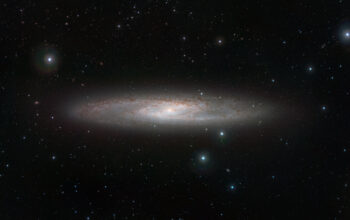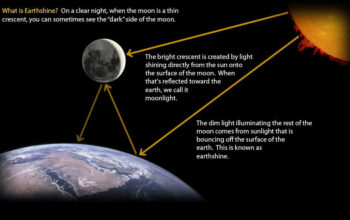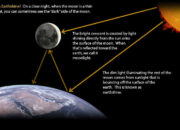In the grand tapestry of the cosmos, where stellar bodies twinkle with cryptic allure, lies a narrative of profound innovation spearheaded by astrophysicists who dare to think beyond the confines of earthly limitations. The notion of “thinking big” transcends mere ambition; it represents a paradigm shift in which the very essence of humanity’s understanding of the universe is called into question. The quest for knowledge in astrophysics is not merely an academic pursuit; it is a journey of imagination and innovation, echoing a metaphysical ambition akin to reaching for the stars themselves.
The metaphor of cosmic exploration serves as a compelling framework within which the discipline of astrophysics can be appreciated. Just as celestial bodies are propelled across the vast voids of space, ideas within this scientific realm are propelled by intellectual curiosity and an unwavering desire to unlock the mysteries of the universe. This illuminating endeavor engages both the empirical and the abstract, catalyzing discoveries that redefine the ontological parameters of existence. It is in this unpredictable expanse that astrophysicists venture, crafting innovative methodologies and technologies that propel their research to unprecedented heights.
At the heart of this pursuit is the pivotal concept of interdisciplinarity, wherein astrophysicists collaborate with engineers, computer scientists, and data analysts. Such partnerships forge connections reminiscent of gravitational interactions among celestial bodies, melding diverse spheres of expertise to achieve singular goals. The development of cutting-edge technologies, such as adaptive optics and high-resolution imaging techniques, are testament to the power of these collaborations. These innovations do not merely enhance observational accuracy; they revolutionize our capacity to glean insights into the obscured intricacies of distant galaxies and cosmic phenomena.
One of the most striking examples of innovation in the astrophysical arena is the advent of gravitational wave astronomy. The historic detection of gravitational waves by LIGO (Laser Interferometer Gravitational-Wave Observatory) not only opened a new chapter in the exploration of the universe but also illustrated the transformative impact of innovative thinking. This breakthrough exemplifies the synthesis of theoretical predictions, engineering prowess, and collaborative spirit, all culminating in a moment of profound scientific significance. The metaphor of ripples in the fabric of spacetime encapsulates the essence of this achievement—signals from cataclysmic celestial events reverberate across the cosmos, providing a new lens through which to examine the universe’s most enigmatic phenomena.
Furthermore, the cultivation of innovative mindsets within the scientific community prompts astrophysicists to venture into territories that some may deem inconceivable. Projects such as the Event Horizon Telescope, which captured the first image of a black hole, embody this audacity. The endeavor required a global network of telescopes working in unison, a feat likened to the orchestration of a cosmic symphony. Each telescope, akin to a musician, contributed unique data that, when woven together, produced a stunning visualization of an astronomical phenomenon long relegated to the realms of theory and speculation. Herein lies a poignant reminder of how collaboration fosters innovation and heightens our understanding of the vast universe.
Yet, amidst these remarkable accomplishments, one must also contemplate the ethical implications of astrophysical advancements. The allure of exploration is tempered by a responsibility to consider the ramifications of innovation beyond our planet. Projects that propose the colonization of other celestial bodies, while enthralling, compel a reevaluation of our relationship with our own Earth. The metaphor of nurturing a garden aptly illustrates this dichotomy; to grow and innovate elsewhere demands a dutiful stewardship of the very environment that bore us. As astrophysicists push the boundaries of exploration, the ethical considerations must remain at the forefront of discourse.
Additionally, educational initiatives demonstrate another arena where innovative thinking reaps significant rewards. Through outreach programs and public engagements, astrophysicists effectively disseminate their findings and inspire future generations. The metaphorical illumination of knowledge serves as a guiding star for young minds, illuminating pathways that may ultimately lead to groundbreaking discoveries. By fostering a culture of curiosity and inquiry, these scientists cultivate an ecosystem in which innovation thrives, allowing the seeds of scientific knowledge to germinate and flourish.
The allure of astrophysical inquiry and the ambition to innovate persists, beckoning those who are unafraid of the unknown. The potential for new discoveries is as boundless as the universe itself, with each new revelation serving as a stepping stone toward greater understanding. As we continue to chart the celestial seas, one thing remains certain: the journey of an astrophysicist, rooted in a legacy of innovation, will resonate across the ages. In the interplay of science and imagination, the words of an astrophysicist who thinks big echo through the cosmos, expanding our collective consciousness and igniting the flame of progress within humanity.
Ultimately, the narrative of astrophysicists striving for greatness serves as a call to action for all fields of inquiry. In every discipline, the pursuit of innovation is paramount. The universe, with its sprawling wonders, is a testament to the collective capability of humanity when fueled by curiosity and courage. As we peer into the abyss of the cosmos and illuminate its shadows, we are reminded that to think big is to embrace the infinite possibilities nestled within the folds of time and space. In this grand odyssey, we find not only the essence of what it means to be human but also the promise of what we can achieve when we transcend the limitations of both our minds and our world.










